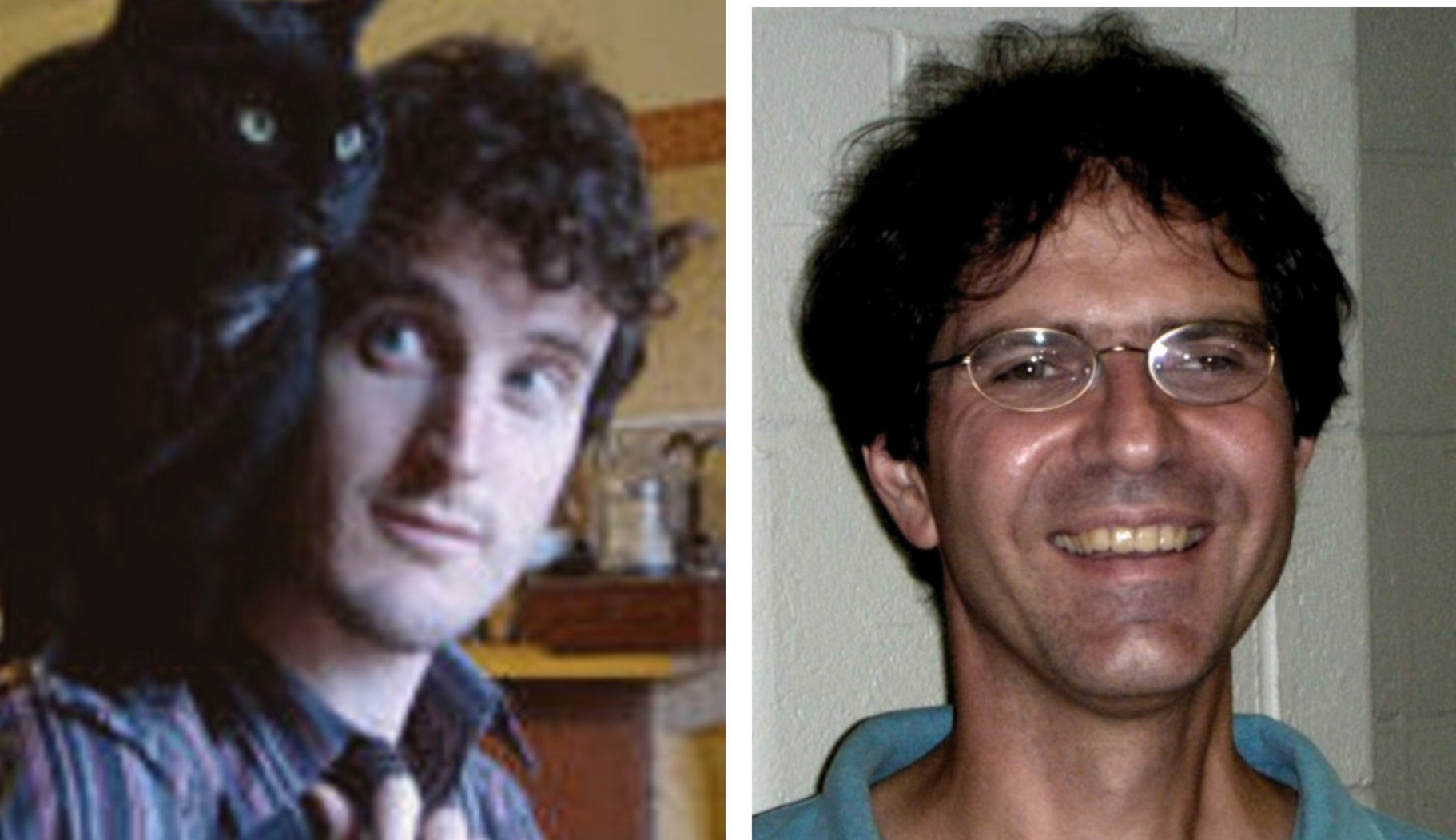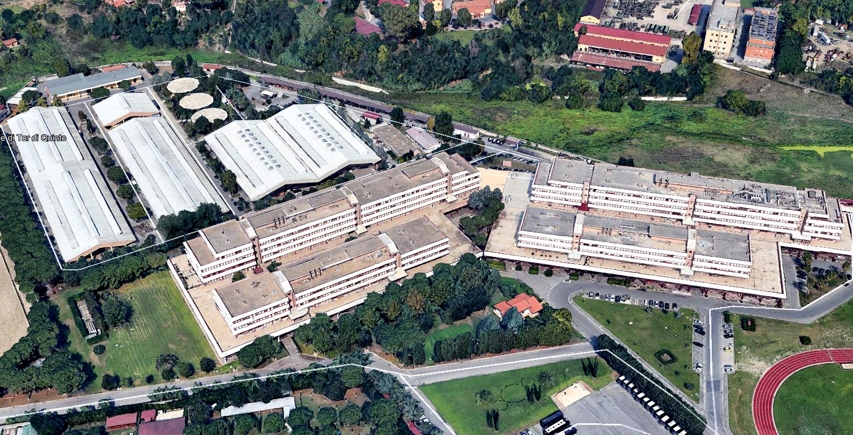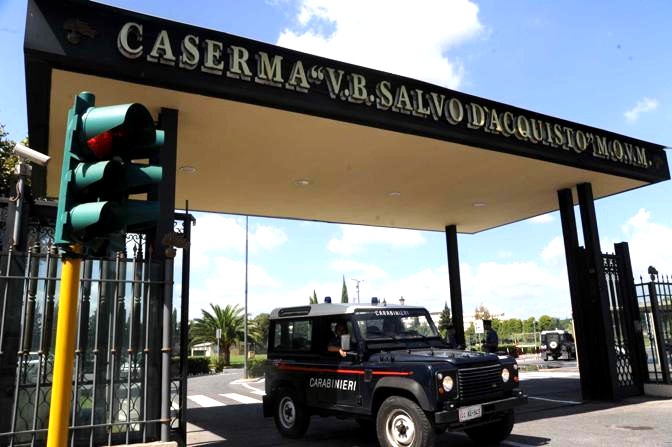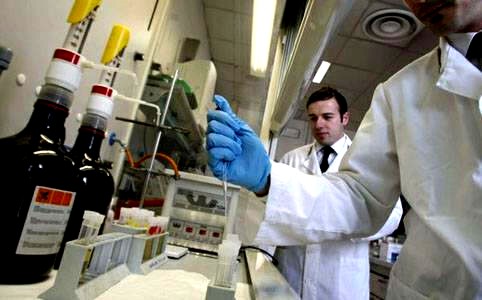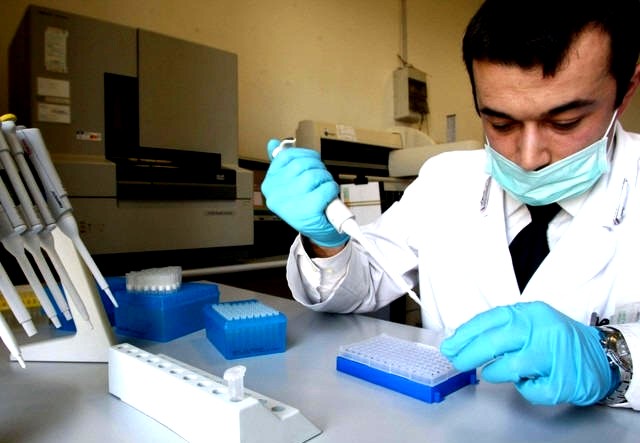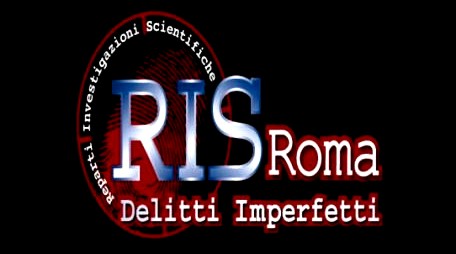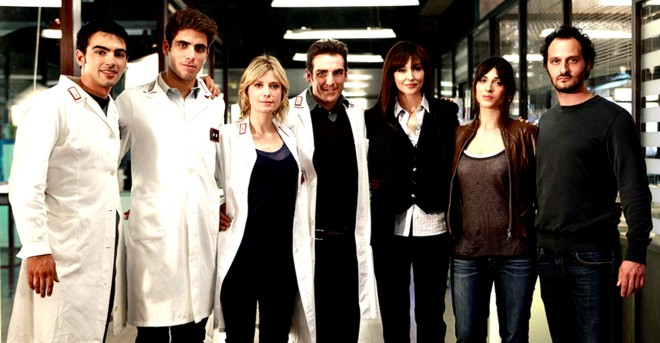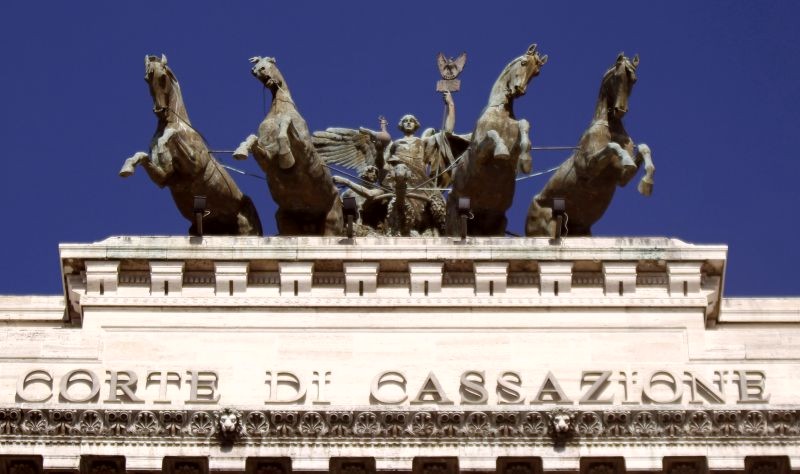
Category: The officially involved
Thursday, October 31, 2013
Why DNA Test Results 6 November May Leave No Further Argument Over Knox And Sollecito Guilt
Posted by Peter Quennell
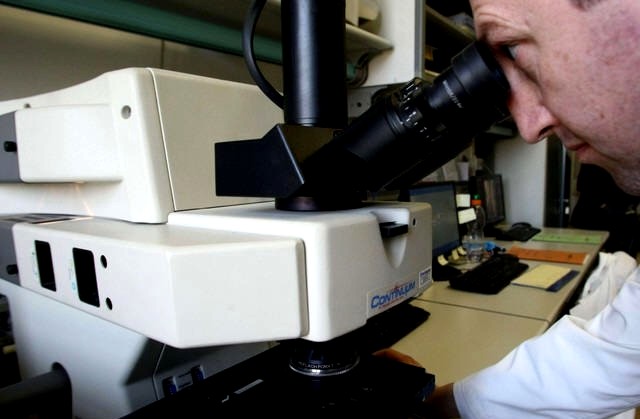
[Above: an image of similar testing in the same Carabinieri laboratory in north Rome]
The official results of the tests by the Carabinieri laboratory will be made public by Judge Nencini in court on 6 November.
The report and attachments are reported to be more than 100 pages long. Andrea Vogt has already warned that no assumptions should be made yet that we know the full story. But already for the defenses, matters do not look pretty.
- 1) It sounds like the result of the DNA near the top of the blade (see images below) shows conclusively that it is another sample of Knox’s DNA. Given where the sample came from it could be blood DNA and add further proof to the notion that Knox was injured while struggling with Meredith.
2) The low-copy-number amplification technique used was almost identical to that used by Dr Stefanoni to prove that it was Meredith’s DNA on the blade of the knife - actually that was a larger sample. Judge Massei’s court accepted this, Judge Hellmann’s consultants tried very hard to undermine it, and the Supreme Court ruled that they did not even come close.
Earlier this year, our main poster Fly By Night in a post worth re-reading explained just how conclusively the results of that first testing pointed to both Meredith and Knox.
As is typical of all DNA analyses, Stefanoni proceeded to amplify the results to a point where an electropherogram would reveal meaningful “peaks” and found that a resultant 13 pairs of peaks corresponded precisely to peaks derived from a known sample of Meredith Kercher’s DNA!
In this case it is pointless to attempt to argue that Stefanoni somehow exceeded the amplification limits of her equipment. As outlined in the DNA discussion above, the typical problems associated with an amplification of low levels of DNA are related to peak imbalances, enhanced stutter, allele drop-outs, or allele drop-ins.
In this case there was nothing but a perfect match for Meredith that even Carla Vecchiotti and Stefano Conti could not deny in court.
Stefanoni had clearly identified an identical match for Meredith’s DNA on the blade of Sollecito’s kitchen knife, leaving Vecchiotti and Conti no other option than to argue for “contamination” in court.
However, it was convincingly demonstrated by Stefanoni and all evidence handlers that from knife collection through laboratory analysis no reasonable opportunity for contamination with Meredith’s DNA existed.
Dr Stefanoni’s testing of all the DNA from the crime scene was done in front of some defense observers. Those who were there saw her do nothing wrong. Dr. Patrizia Stefanoni, Dr. Renato Biondo, Professor Giuesppe Novelli, Professor Francesca Torricelli, Luciano Garofano, Elizabeth Johnson and Greg Hampikian have all confirmed that Meredith’s DNA was on the blade of the knife.
It looks as if the prosecution has now achieved a clean sweep of all of the of DNA testing. Meredith’s DNA on the lower blade of the knife seems even more conclusively a firm given, and so does Knox’s on the upper blade and the handle.
We are where we were back in 2008 before trial, where other defense lawyers might have suggested to their clients to select a trial of the short form type - the same choice that will see a somewhat penitent Guede out on work release in two years, no more.
But instead, their clients could now be facing life sentences for that bad choice.
Image: looking along the blade toward the handle, both sides of the knife
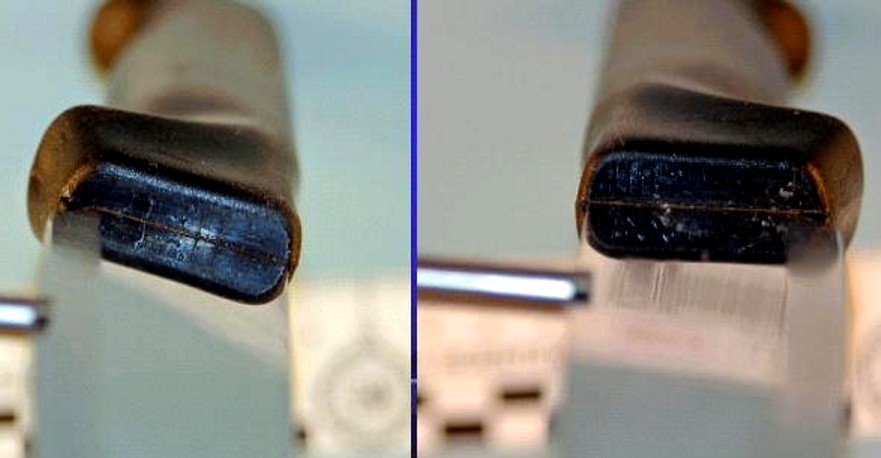
Here is an image showing the I trace in the location described in the post with credit to Iodine of PMF and the Case Wiki
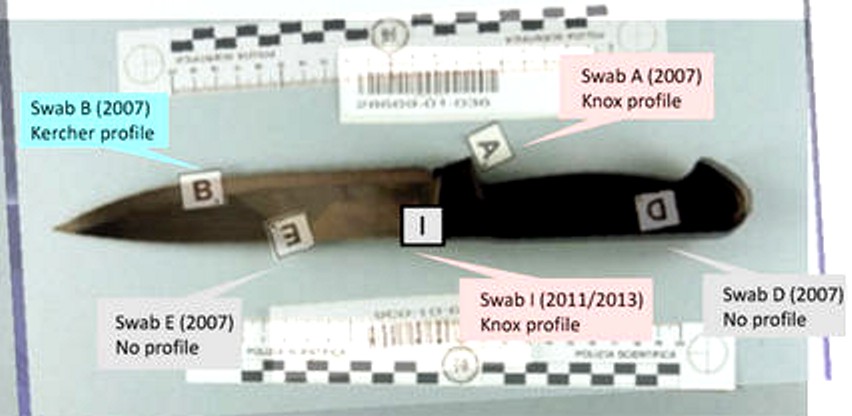
Monday, October 14, 2013
Carabineri Labs Might Prove Fourth And Conclusive Scenario For The Mixed DNA Samples In The House
Posted by Peter Quennell
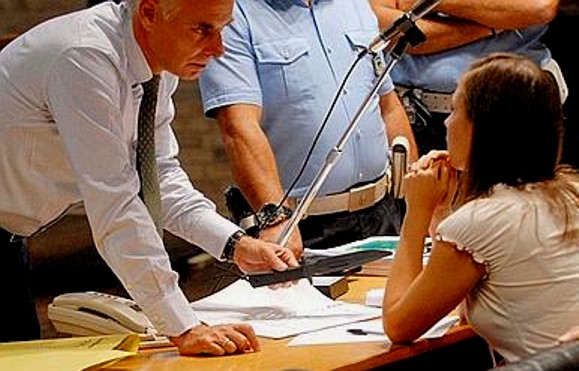
Lab work is believed to have continued today in the absence of the defense observers, and will continue on and off through to October 30th.
The defense observers may not have a further role at the laboratory. Most or all of the analysis leading to firm attributions of the DNA will be done by the Carabinieri team electronically.
It is that final attribution that the defenses are widely rumored to be so terrified of. That Knox’s DNA is there seems a given. The cliffhanger is whether Meredith’s DNA is there also.
Another possible mixed trace. If so it would be the sixth one.
Judge Massei did not arrive at a full scenario for how the five mixed blood traces at the crime scene could have been created. He described what was found by crime scene investigators and moved on.
After the 2009 Massei trial some further analysis was conducted.
With great help from Luciano Garofano’s DNA chapter in Darkness Descending and Barbie Nadeau’s and Andrea Vogt’s excellent reporting, we posted a comprehensive update mid-2011.
The locations of the five mixed traces at the crime scene are as follows.
1. Bathroom near Meredith’s room:
- On the drain of the bidet
- On the Q-tip box located at the ledge of the sink
- On the edge of the sink
Elsewhere in the apartment:
- In a luminol-enhanced bare footprint in the hallway outside Kercher’s room
- In a luminol-enhanced spot found in Filomena Romanelli’s room
Three sources for Knox’s blood have long been suggested: some bleeding from her ear, some bleeding from a possible nosebleed, some bleeding from the open scrape on her neck. .
All three of them could theoretically have been inflicted by Meredith as she struggled with the trio to save her life. None seem to explain why there were repeated MIXED traces.
That has remained a huge puzzle. But now we are looking at a fourth scenario: that Knox cut her hand with the top end of the blade as she stabbed at Meredith’s neck.
That could explain once and for all where Amanda Knox’s blood came from AND why it was mixed with Meredith’s blood. It happened right there.
[Click for larger image. Handle as from the blade direction. Sample is apparently from gap on sharp side.]

Friday, October 11, 2013
The Carabinieri Laboratories In North-Central Rome Where Now Two Different Samples Need Attribution
Posted by Peter Quennell
Third update
Italy-based freelance reporter Andrea Vogt has tweeted the following: Leaks suggest DNA on knife shows knox genetic profile, but there is another profile being studied. Too early to interpret
Second update
Excellent comment on PMF by the poster Hugo which explains how the balance hasn’t changed.
The song remains the same. The republic contends that Amanda Knox used that knife to murder Meredith Kercher. The knife has yielded the DNA of just two people: Knox, in a position which indicates that she was gripping it, and Meredith, in a position which indicates that she was stabbed with it.
The defence can easily claim that Knox’s trace results from normal culinary use (although Stefanoni said the handprint indicated an atypical stabbing grip, with the knuckles on the same side as the blunt edge of the blade, and not a normal culinary cutting grip, with the knuckles on the same side as the sharp edge).
The problem is Meredith’s DNA at the sharp end. ‘Independent court-appointed expert’ Carla Vecchiotti admitted on the stand that this could not have arisen from laboratory contamination.
Professor Christopher Halkides’ suggestion that the contamination occurred during collection, because Stefano Gubbiotti acquired Meredith’s ‘aerosol DNA’ on his clothing, when he was supposedly in the house the same day, almost a week after the murder, and thus transferred the DNA from his clothing to his fingers to his evidence-handling gloves to the knife when he took it from Finzi’s envelope and re-packaged it in a stationery box at the Questura, is self-evidently absurd, fanciful, fictional and completely outwith the realms of actual forensic science.
And it’s not in evidence anyway, so it’s not an option open to the court.
Plus the objection to low copy number DNA is an American superstition not recognised in Europe. Unusually, it’s a scientific area where the US lags well behind. So you get hillbillies like Bruce Budowle grumbling, ‘Cain’t rightly say what that there newfangled LCN is, but ah reckon ah’m agin it.’ You’ll recall that a British appeal court has found that Bruce Budowle hasn’t the faintest idea what he’s talking about and also that, like Halkides, he tends to cite sources that don’t actually say what he says they say.
Knox is there on the hilt of the knife. And M is there near the point of the blade, and she’s trying to tell us something.
First update
The gap between the blade and handle of the knife was apparently widened to obtain the sample for the test. Sollecito lawyer Maori has claimed it is Amanda Knox’s. It is apparently adjacent to her previous trace.
If that is the case, the strength of the DNA evidence (which is very strong) remains unchanged. Dr Stefanoni identified Exhibit 36 on the blade as a strong trace of Merediith’s DNA. This was supported by various experts.
No contamination of that trace has ever been proved - or even a convincing contamination scenario put forward - and the video on top of the post below shows how the DNA charts for the sample and for Meredith totally match.
First post
Human DNA is widely reported in Italy to have been established from the sample never before tested on the large knife.
We may have to wait on an announcement from Judge Nencini in Florence as to whose DNA it is. That may not happen today.
These labs in the Carabinieri barracks are not far from the center of Rome. They are very well know to Italians because (images at bottom) “RIS” the Italian version of the show “CSI” is set there.
Thursday, October 10, 2013
Testing Of The DNA Sample Starts Today Though Possibly No Results Announced Before 6 November
Posted by Peter Quennell
1. ViaDellaPergola’s video
That video from 2010 illustrates how the existing positive tests described in the Massei Report were crystal-clear; subsequently Hellmann, Zanetti, Conti and Vecchiotti (all now being investigated) so muddied the water.
2. From our short-form Massei Report
This is from Part Three of the four-part abbreviation of the Massei Report done by Skeptical Bystander and a PMF team in mid-2011.
Exhibit 36: The double DNA Knife
Exhibit 36 is a 31 cm long knife with a 17 cm blade and a dark handle. It was seized from the kitchen cutlery drawer at Raffaele Sollecito’s home, located at 110 Corso Garibaldi in Perugia, on 6 November, 2007 when Chief Inspector Armando Finzi was ordered to perform a search of Sollecito’s residence. This exhibit is important because “Sample 36b” taken from a scratch on the knife blade yielded Meredith Kercher’s biological profile.
After putting on gloves and shoe coverings, Finzi and his team entered the home. They noted a strong smell of bleach. Opening the cutlery drawer, they saw a big, “extremely clean” knife. In Sollecito’s bedroom they found a second knife. The knives were bagged and sealed.[106]
Exhibit 36 was carried back to the police station, where it was placed in a box for shipping to the Polizia Scientifica in Rome. Dr. Stefanoni was the recipient of the box containing the knife in Rome. All parties testified that standard procedures were followed to avoid the risk of contamination.
On 4 November, 2007, Meredith’s roommates Filomena Romanelli, Laura Mezzetti, and Amanda Knox had been taken by the police to look at the knives in their kitchen at the apartment in Via della Pergola. Personnel from the Questura reported Amanda’s “severe and intense emotional crisis, unlike [the reaction of] the other two girls”.[292] This behavior was contrasted to Amanda’s behavior at Police headquarters two days earlier:
“This circumstance appears significant both in its own right and also when one considers that Amanda had never previously shown signs of any particular distress and emotional involvement (in the Police headquarters, on the afternoon of November 2, Meredith’s English girlfriends, Robyn Carmel and Amy Frost in particular, according to their declarations, had been surprised by the behaviour of Amanda, who did not show emotions).”[292]
Investigators’ attention was alerted to the Exhibit 36 knife because of Amanda’s inconsistent behavior. Later, police overheard a jail conversation between Knox and her parents on 17 November, when Knox said, “I am very, I am very worried about this thing with the knife ... because there is a knife of Raffaele’s ...”.[292]
Exhibit 36 thus became a central piece of trial evidence. The debate would subsequently be focused on two issues: The compatibility of the knife with the large stab wound in Meredith’s neck; and the reliability of the DNA analysis.
Considering the first of these points, although the knife blade is 17 cm long, the depth of the larger wound is just 8 cm . This “discrepancy” was the basis of defense efforts to discredit the knife as a murder weapon. The compatibility of the Exhibit 36 knife and the larger of Kercher’s wounds is addressed by Professor Bacci (see p. 121 of the Massei report). Professor Norelli maintains that “it is not said that a blade is always embedded (plunged into) the target right up to the handle; the blade may also go (in) only to a certain portion of its length, and not right up to its end”.[126]
It is noted that the movements of the victim may have played a part in determining the depth of the cuts. “If I insert a centimeter of the blade into the victim and the victim suddenly moves towards me, how much of the blade will be driven inside the body surface area is absolutely unpredictable and depends on the action of both”.[129] Alternatively, the blade of the knife might have met an obstacle. The cutting action is described on p. 146 and again starting on p. 152.
Defense witness Dr. Patumi disputed the compatibility of the wounds with said knife, arguing that a blade of 17 cm length could not have caused a cut 8 cm deep; see p. 156-157. However, the Court rejected “the thesis of the incompatibility of the most serious wound and the knife Exhibit 36”, holding this thesis to be “unacceptable” .[172]
Regarding the second point ““ that of the DNA analysis ““ Dr. Stefanoni was the responsible expert at the crime lab in Rome. Although no biological traces were visible to the naked eye on the face of knife blade, Dr. Stefanoni perceived scratches - “anomalies in the metal’ - on the blade when rotating the blade under strong lighting. The streaks were:
“... visible under good lighting by changing the angle at which the light hit the blade, since obviously the blade reflects light and thus creates shadows, making imperfections visible.”[196]
Sample 36b was taken from one of these points on the blade. The genetic profile of Meredith Kercher was identified from this sample. Stefanoni presented charts to the court, showing the DNA profile: she noted “that the peaks were a bit low, but that without doubt were still within the range that is considered useful for testing a specimen (page 108). Although of a much lower quantity of DNA, the profiles were nonetheless very present and, by making a comparison with Meredith’s profile, Dr. Torricelli reported that “šwe find all the alleles, and we find them to be equal to those obtained from the swab taken, from the sample taken from the wound. Therefore in this case too, without doubt”› -she continued- “šalthough we are confronted with a sample that contains very little DNA, it nonetheless contains the DNA of only one person and is therefore comparable to Meredith’s; with regard to this knife, I would say I have no doubt in interpreting it: specimen A with Amanda’s profile and specimen B with the profile, compatible with that of Meredith.”[231-32] However, the amount of DNA was small and it was all used up in order to run a single test.
The defense objected that it was impossible to evaluate whether the actual nature of Sample 36b specimen:
“.. when we have a small amount of DNA we talk about low copy number DNA, and that when this type of DNA is present, we are indeed able to carry out our amplification and obtain a profile, but we must remember that we may have lost one of the alleles, we may have an allelic imbalance ... it becomes very difficult to distinguish from a real allele, so that when working on ... small quantities of genetic material, it is necessary to be very cautious in interpreting the results.”[237]
To this point, Dr. Stefanoni argued that it is preferable “to know to whom a biological specimen is attributable, rather than ascertaining the nature of that specimen, without attributing it to anyone.”[288]
Furthermore, it was argued by the defense that the quantity of DNA was too low to be able to perform the tests and consider the results reliable. Given a low amount of DNA, the risk of contamination is high - particularly given the very numerous number of samples being analyzed.
The court rejected the possibility of contamination because no anomalies were ever identified in the Polizia Scientifica’s analytical process. The Prosecutor pointed out that all tests had been carried out in the presence of a lawyer/consultant for the defense - who had raised no objections during the testing. The possibility of contamination during the collection of evidence was rejected based on a detailed consideration of the collection process.
Thus, the DNA from Meredith which was found on that knife cannot be traced back to any contamination occurring in the house in which it was found, or to the method of acquisition of the knife on the part of Finzi, or even to the collection and dispatch methods used by Gubbiotti. In addition, as has been said, that such contamination could have been carried out by the laboratory is also ruled out.[266]
In addition, Dr. Stefanoni testified that she did have the biological profile of the defendants, but did not employ them while interpreting the electrophoresis diagrams. Nevertheless, the Massei report judges that:
“... the main criticisms advanced by the defense concerned precisely this very small DNA quantity, and it raised the question of the reliability of the result obtained.”[288]
To this central point, Dr. Stefanoni:
“Regarding the too low quantity of DNA, Dr. Stefanoni declared, as has been seen, that even in the case of a particularly scanty amount of material, the analysis and evaluation should be performed, and she added that, if the data that emerges is absolutely readable and interpretable and the correct laboratory practice was followed, the result is reliable and there is no reason to repeat the test.
“It does not follow ... that the data is unusable and unreliable as a consequence of a lack of repetition due to a lack of further quantities of DNA. It is necessary, instead, to take account of the data that emerges from such a specimen and to check for the ““ possible ““ presence of other elements, both circumstantial and inherent to the data itself that, despite the lack of repetition of the analysis, could allow an evaluation of the reliability of the analysis and of its outcome.”[289]
The court concluded that the biological profile that resulted from the 36B DNA analysis ...
“... gave a biological profile attributable to the person who was mortally wounded with that very knife: a result, therefore, that was entirely reasonable and consistent with the event; [it was] certainly not explainable as a mere coincidence, and it must be ruled out ““according to what has already been observed in this regard - that it could have originated from contamination or from the use of a suspect-centric method.”,[290] and that
“”¦. it should therefore be affirmed that the analysis of trace 36B, which detected the presence DNA attributable to Meredith, appears to be completely reliable.”[293]
3. TJMK posts on the latest DNA science
1. Poster Fy By Night: The Hellmann-Zanetti Appeal Court’s DNA Consultancy Looks Even Worse In Face Of The Latest Science
2. The Machine A New DNA Analysis Strongly Implicating Sollecito Seems to Have The Defense Forces Extremely Rattled
4. Sollecito tries to wind back the “pricked” claim
Our lawyer SomeAlibi recently explained how.
5. Andrea Vogt posts possible scenarios.
Scroll down to UPDATE OCT. 9, 2013 An excellent weighting of the possibilities.
The DNA could be Meredith’s, which would dramatically hurt thr defenses. It could be Rudy Guede’s, which would dramatically hurt thr defenses. Or it could be neither (or untestable) which would nt neccessarily affect the outcome. .
Sunday, October 06, 2013
Dr Mignini Pushes Back Against His Demonizers Trying To Ascribe Non-Existant “Satanic Theory”
Posted by Peter Quennell
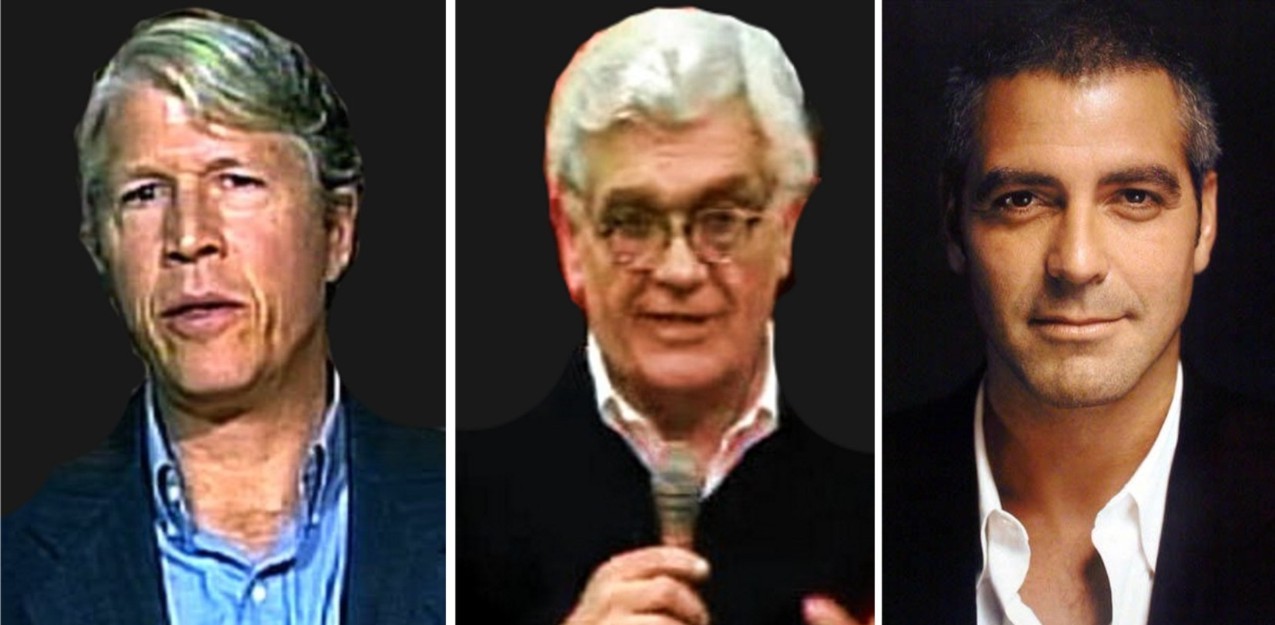
[Preston left, Spezi center, and George Clooney who is at legal risk for his option on their defamatory book]
1. Dr Mignini’s Published Statement
To the editor of Florence Corriere
Dear Director,
I am Giuliano Mignini, the magistrate who performed the investigation and trials of first instance and appeal in Perugia against the people accused of the murder of Meredith Kercher, as well as the investigation into the death of Francesco Narducci linked to the one performed by the Florence Prosecution Office in relation to the masterminds of the “Monster of Florence” murders.
I saw reported the interview that the journalist Mario Spezi ““ a person accused in the Narducci case ““ did with Amanda Knox, a main defendant in the appeal trial that will start today ““ published in the Corriere Fiorentino on Sep. 29.
In two recent cases the Court of Cassation has annulled verdicts, which acquitted Knox and Sollecito, and which decided [by Judge Micheli] a dropping of charge against Spezi (the parts regarding “˜lack of certainty about malice’ were annulled too).Therefore I don’t need to add anything further on that point. Instead, I need to point out the falsehood of an assertion which Mr. Spezi makes at the beginning of his article, as he tries to explain the reason for a link which, in his opinion, allegedly exists between the two cases, the one related to the Monster murders and Narducci’s death, and the one about the Kercher murder.
Mr. Spezi’s text says: “”¦ a strangely similar background, for two different cases, behind which the magistrate thought he could see satanic orgies on the occasion of Halloween for Amanda, and ritual blood sacrifices as a worship to the Devil in the Monster of Florence case”¦”.
This is an assertion that Mr. Spezi and crime-fiction author Douglas Preston have been repeating for years, but does not find the smallest confirmation in the documentation of the two trials, nor in the scenario put forward by the prosecution in which the Meredith murder (which didn’t happen on Halloween but on the subsequent night) was the consequence of a sex hazing to which Meredith herself did not intend to take part, and, above all, it was the consequence of a climate of hostility which built up progressively between the Coulsdon girl and Amanda because of their different habits, and because of Meredith’s suspicion about alleged money thefts by Knox.
Furthermore the object of the proceedings in the Narducci case is the scenario about the murder of the same Narducci and the attempt, by the doctor’s father and brother, to conceal the cause of his violent death, and this included the background within which the event ““ which was a homicide in my opinion and in the opinion of my technical consultant, coroner Prof. Giovanni Pierucci of the University of Pavia ““ had developed and taken place.
I had already denied several time assertions of such kind, but Mr. Spezi and Mr. Preston, and some people connected to them, go on repeating a lie, apparently hoping that it will become true by repeating it.
Another astonishing fact is that, despite that I was the prosecutor in the Kercher trial together with my colleague Manuela Comodi and then subsequently with my colleague Giancarlo Costagliola [at annulled apeal], and despite that I limited myself to formulating judicial requests which were all agreed to by a multitude of judges and confirmed by the Supreme Court, I am still considered as the only one responsible for an accusation against Ms. Knox and Mr. Sollecito, by twisting its content in various ways.
In the Narducci case, in the same way, I simply limited myself to performing the investigation and requesting the remands to trial, and the trial will have to start again now because the Supreme Court has annulled the dropping of charges [by Judge Micheli] and sent back the trial to another preliminary judge in Perugia.
The purpose ““ quite overt ““ of such endlessly repeated lies, is to defame the investigator, picturing him as a magistrate who is following alleged personal obsessions rather than sticking at facts, as instead he is.
The hope that such conscious misrepresentation of reality could bring advantage to the defences (foremost that of Spezi himself) is consistent with a bad habit which has all along flourished in Italy but is now also copied abroad.
Therefore I ask you to please publish my rectification against false and seriously defamatory information.
Kind regards
Giuliano Mignini
2. Context: The Mafia Playbook Adherents
As we have often d previously, the mafia and their handmaidens strive constantly to bring the Italian justice system down a peg or two.
When not using dynamite, as they often did in the past, they especially favor the weapon of character assassination of witnesses, judges prosecutors and police.
The vilification campaign being run in the United States by David Marriott, Chris Mellas, Doug Preston, Bruce Fischer, Steve Moore, Michelle Moore, Nigel Scott, and David Anderson (and from Italy by Frank Sforza) seems to be right out of the mafia playbook, whether all of them know it or not.
How the mafia have been using the public relations campaign to their own advantage seems set to emerge further in at least five of the associated trials coming down the pike: those of Luciano Aviello, Frank Sforza, Mario Spezi, Raffaele Sollecito (his book trial) and Amanda Knox (her book trial).
And now Mario Spezi, obviously a real glutton for punishment, once again piles on. Spezi has had incessant run-ins with the Italian law - and now he seems to have entered some kind of self-immolation end-game.
With Doug Preston, Spezi published several editions of their Monster of Florence scenario. These are widely discredited in Italy, not least because they are such obvious attempts to apply lipstick to a pig (half of the text is about an obviously red-handed and very very scared Preston trying to prove he did not actually melt down under interrogation for his probable felony interference in a case.)
Spezi has been charged with interfering with and hampering both the Monster of Florence investigations and the related investigation (which involved Dr Mignini) into the Narducci drowning - a clear murder (the body was found bound and another substituted) though a nefarious group worked very hard to deny that. (They were all charged as well, and the Supreme Court has recently confirmed the correctness of that.)
In recent weeks the Supreme Court has given a firm order for both prosecutions against Spezi to go ahead. How Spezi stays out of prison if he is found guilty is anyone’s guess. Doug Preston came up with a calamity of an explanation for the arrest of Frank Sforza for domestic violence, but presumably his assistance wont be sought this time around.
So in face of impending prison Spezi really watches his tongue, right?
No, in fact in a move bizarre even by his own standards, Spezi on 29 September published a surreal “interview” with Amanda Knox in Florence Corriere. It once again repeats the felony claim that the prosecution charged Knox and Sollecito in the first place based only on some “satanic theory”.
The Perugia prosecution has never never NEVER claimed that. The Florence prosecutor has already moved into felony-investigation mode (this could cost Spezi more years in prison) and on 3 October Florence Corriere published this correction below by the defamed prosecution (translation is by Yummi).
This unequivocal statement (far from the first but the most prominent) has its own legal status. It is a clear legal warning to the likes of Chris Mellas and Bruce Fischer that if they sustain the libel they are at risk of felony charges also.
The statement has already had a strong ripple effect in Italy. Many former allies - some of them not very savory - now feel that Spezi has lied to and betrayed them for his own ends.
Wednesday, October 02, 2013
Appeal Session #1(B) Detailed Report On Enquiries The Court Has Okayed
Posted by Our Main Posters
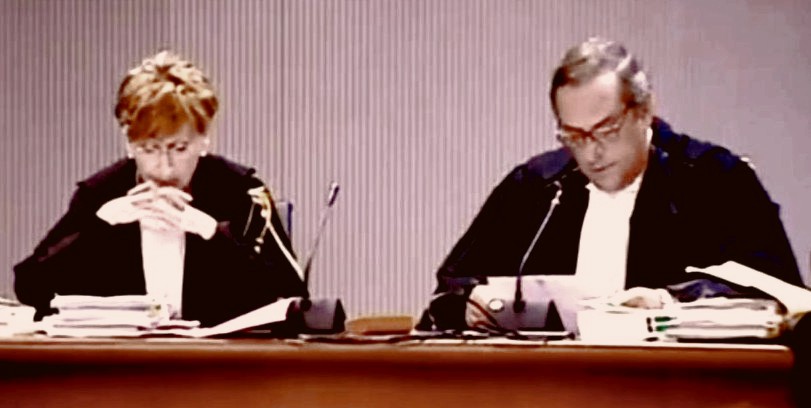
[Above the two co-judges with lead judge Allessandro Nencini reading the case history]
Explanation
The previous post listed what has already been agreed to by the court to guide the appeal. This report which only became available later describes what had been the prosecution and defense requests.
Translation From The Umbria24 website
Meredith, war of requests in the first hearing of the 2nd Appeal
The court has order a new test on the I trace and on the hearing of the witness Luciano Aviello. Rejected all other requests
By Francesca Marruco
After a little over 2 hours in counsel chambers the Florence Court of Appeals has decided to order a new test on the trace evidence of the knife seized in Raffaele Solecitto’s apartment, the weapon presumed to have been used in the murder.
The Court has also decided to hear the witness Luciano Aviello but rejected all the other requests for renewal of investigations presented by the defense. The Court resumes on Friday with Aviello and the assignment of the task of the new genetic analysis to the Carabinieri del Ris of Rome.
[The appeal] this morning in the maxi courtroom no. 32 of the Florence Justice Courthouse, commenced the new appeal for the murder of Meredith Kercher, after the annulment of the acquittal by the Supreme Court.
Present in the courtroom was only Patrick Lumumba. Absent, as expected, were the two appellants, Amanda Knox and Raffaele Sollecito.
- 9:00 Francesco Sollecito, father of Raffaele, says he is tranquil about the outcome of the new trial. Responding to journalists, he specified “The statement of the Supreme Court is compromised by errors committed because the judges did not have full access to all of the proceedings, as they themselves indicated.”
- 9:45 The defense of Knox and Sollecito have asked for the exclusion of the Patrick Lumumba (civil) party because the conviction of Amanda for calunnia has already been passed into final sentence.
This request was opposed by the General Prosecutor Alessandro Crini, and the lawyer of Lumumba. For them the plaintiff’s civil right is legitimate, as the Supreme Court has asked this court to re-evaluate the penalty in light of the finalized sentence of Knox.
The Court retired to counsel chambers to decide, announcing it wanted to decide today on any reopening of the investigation.
- 10:15 The court rejects the request of the defense of Knox and Sollecitto to exclude the civil party Patrick Lumumba, because the Court specifies that, among other things, the offense was not assessed in totality by the trial court.
- 10.50 The President of the Court of Appeals, Allessandro Nencini, is initiating his introductory report, starting from the day of Meredith’s homicide. The judge travels trough the most important passages of the three Courts. Speaking of the trace, secured by the consultants of the second [Hellman] Court, on the knife (considered the weapon of the crime by the first Court) President Nencini said: “It is necessary to underline that the independent consultants had found another trace; but it was not analyzed”.
- 11:15 The President of the Court, Judge Nencini, at the end of the introductory report, said: ” This is an appeal for matters of undeniable seriousness beyond the media spectacularization. Thus the Court is willing to give all possible space for debate to all of the parties, because originally there was a solid verdict, and the actions on which we proceed are of undeniable seriousness”
- 11.25 Raffaele Sollecito defense lawyer Giulia Buongiorno was the first to take the floor.
]Bongiorno:] Sollecito’s defense does not ignore the motivations of Cassazione, and we are in favor of any kind of verification that the Court will order, with the following caveats. This proceeding has always been based on two types of evidence, the testimonial and the technical. We request that during this proceeding, which we hope to be the last one, that the Court during the next hearings will concentrate only on the truly reliable evidences, putting aside those that are nullified by media conjecture.
Many witness have said things because they have read them or heard them. The proceeding was reopened, but not to collect this type of guesswork. We do not want to inflate this proceeding with new conjectures. We request to examine in depth the crime observed, as emphasized by Cassazione. In the crime scene room there are copious traces of two of the four claimed present persons, the victim and Rudy Guede who admitted to having been there, and none of the two appelants except on the hook of the victim’s bra.
When the Prosecutor asserts that there are no traces because Amanda and Raffaele cleaned them, we think that this is impossible. For this reason we request to have a evaluation done in order to verify if it is possible to clean selectively… A Cassazione mistake was that it didn’t notice the entry into the crime scene room before the bra hook was found, so we request the acquisition of two reports [on that].
We want to understand if in a sealed place it is possible to get firm evidence even after the admission by the police of other searches. We do not request to simply take the hook and to say that it is contaminated, we want to know if in that environment it was possible to collect some genuine evidence, because at the crime scene there were not ten traces of Raffaele but only that one”.
A subordinate request by Giulia Buongiorno is that experts, new experts or the ones at the Hellman appeal, will read the electropherograms. Buongiorno requests the analysis of both of Meredith Kercher’s cell phones that she consider the “black box” of the crime and that they “were never analyzed deep enough by the Corte d’Assise di Perugia” The defense requests also analysis of the presumed sperm trace on Meredith’s pillowcase.
- 12.15 Amanda Knox defense lawyer Carlo Della Vedova takes the floor and raises right away an exception to the judge’s stipulations. “Are we today able to judge on matters that happened six years ago? Can a person be under proceeding for life? Are we sure that Amanda Knox is an accused like all the others? Is it right, the indefinite delay of this proceeding? For all of this I insist that the Court evaluate the constitutionality.”
- 13.00 The Kercher family’s lawyer produced a letter written by the family members of Meredith that read “We are confident that the evidences will be reexamined and all the requests of more evidences will be granted, in a way that all the unanswered questions will be clarified and that the Court can decide on a future way of action in this tragic case. The past six years have been the most difficult of our lives and we want to find an end and remember Meredith as the girl that she really was rather than remember the horror associated with her”.
-14.00 The General Prosecutor Alessandro Crini says he is against the request of the defense to hear anew from some witnesses, including Rudy Hermann Guede. The same argument Crini voiced for the majority of the requests of the opening introduction presented by the defense. In conclusion, he asked for the the addition of the evaluation of the “I” trace, isolated by the independent experts, but never analyzed because they claimed it was believed to be Low Copy Number. Furthermore the prosecutor asks that the witness Aviello be reheard.
-15:00 The lawyers of the civil part that represent the Kercher family support the request of the General Prosecutor Crini, and opposed the requests of the defense. The lawyer Francesco Maresca said he believes that the defense attempts to frame with a new “dress” evidence that is strong, resistant, and robust, from the findings of the trial court, and that were minimized by the first appeal court. For example, the witness Capezzali.
Also there are newly framed certain requests that are obsolete, that have already been actioned. Like that of the selective cleaning. In the bathroom next to the room of the crime, there were many mixed traces of DNA of Amanda and the blood of Meredith. And the genetic profile of Sollecito, besides on the bra hook, was present only mixed with that of Amanda on a cigarette butt, then how did it migrate, only that one, from the cigarette butt to the bra hook?
- 15:10 The defense of Raffaele Sollecito maintains the request to analyze the “I” trace, but opposes hearing from the witness Luciano Aviello. Buongiorno also pointed out that it is not true that the independent experts of the second court decided automatically to not analyze certain traces, but did so in the presence of the prosecution experts Stefanoni and Novelli and those of the defense. Carlo Dalla Vedova, for the Knox defense, said that Avelio should be heard only to demonstrate that the police uses him two different ways. Like when Avelio said he knew where the crime weapon was.
- 15.30 The Court retired in council chamber and announced that will not come out before 17.30
Conclusion
Thereafter the court convened again and the decisions were as outlined in our post below this one. Almost all of what the defense had argued for - each of them a stretch if you know the full circumstances - was denied.
And the two main requests from the prosecution - that Aviello be put back on the stand, and the large knife be retested - were accepted. Ourcomes of these may or may not add to the strength of the prosecution’s case, but seem to offer no prospects of joy for the defenses.
Friday, September 13, 2013
Lead Judge Is Now Confirmed And Court Dates Announced For The Florence Appeal
Posted by Peter Quennell
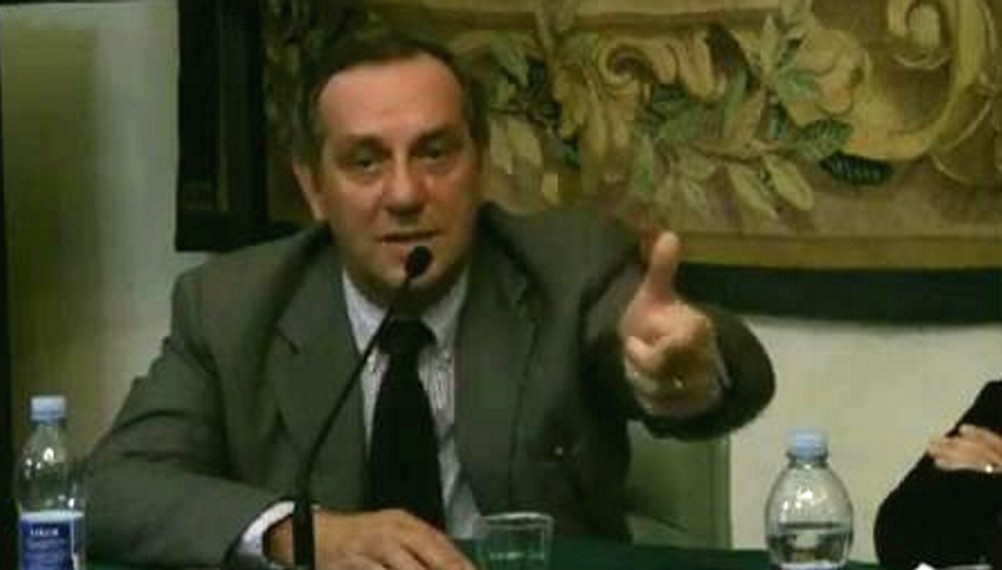
Above: the formidable senior appeal judge Dr Alessandro Nencini who will preside over the appeal.]
September 30; October 4, 23, 24; and November 6, 7, 25, and 26.
These are the dates the Florence appeal court will meet. Corriere and other Italian media sites are confirming these as the dates.
It is confirmed that Judge Alessandro Nencini will preside over the appeal in the Palace of Justice’s Courtroom 32. He is a very senior judge. As the ANSA News Service mentions, Judge Nencini is the President of the Second Chamber of Appeal of the Florence Court.
The new Prosecutor General of Tuscany (Florence’s region) Dr Tindari Baglione, the chief prosecutor of Tuscany’s appeal court, is selecting the prosecutors for the appeal. He arrived in Florence in May of this year. He is said to be formidably unbending. He recently imposed tough sentences on 27 people for the environmental damage caused by illegal work in Mugello on the high speed rail link between Florence and Bologna.
Already appointed as the lead prosecutor is Dr Alessandro Crini. He was among the Florence prosecutors who handled the investigation into the murders by the Monster of Florence and also the mafia massacres of 1993. In the Monster of Florence case he was a deputy to the leading prosecutor Dr Paolo Canessa, the main prosecutor of the last and final MoF trials.
There are at least seven pieces of bad news for the hotheaded among the Knox-Sollecito faction coming down the pike, some already mentioned in this recent post here..
- 1) Prosecutors Paolo Canessa and Alessandro Crimi carried out their MoF investigations in cooperation with Prosecutor Giuliano Mignini of Perugia. We believe it was they who first involved Dr Mignini in the MoF case by explaining the possible MoF connection with the Narducci murder Dr Mignini was investigating. Dr Mignini has no role in this appeal, but they had obvious confidence in him..
2) Giulia Bongiorno may be leaving the Sollecito team. Sollecito himself has done an immense amount to embarrass her with his defamatory book and narcissistic TV claims. The new lawyer Dr Mastro is said to be a relative of the Sollecito family and has been harshly critical of the Bongiorno defense line of joining Sollecito to Knox at the hip. He would presumably separate Sollecito from Knox, and may throw Knox to the wolves if it helps.
3) The trial of Luciano Aviello will be running in Florence during the same time as the appeal. Each could explosively impact the other. We explained the extraordinary implications of this trial for the Knox and Sollecito entourages in this past post also linked to just above.
4) The trial of Frank Sforza for criminal defamation will start in Florence on 6 November. A prosecutor will bring this case, it is not a simple calunnia case brought by those Sforza abused. We have a new post pending which will explain the many nasty implications for the FOA. Its testimony could also spill over into the Knox-Sollecito appeal.
5) The appeal outcome is expected to be arrived at by the latest in December. Knox and Sollecito wont have to wait long to hear the probable outcome: guilty as charged. Whether either will appear in the court seems doubtful, but a no-show will do them no good. A coward’s move.
6) The chief prosecutor in Florence is expected to announce any time now what charges will be brought against Raffaelle Sollecito and his publishers for the many false accusation of crimes and malicious mis-statements of evidence he foolishly included in his book. At least one could incur a substantial prison sentence: Sollecito’s false accusation that the prosecution sought a deal whereby he would turn on Amanda Knox in exchange for lesser charges.
7) The chief prosecutor in Bergamo north of Milan is expected to announce any time now what charges will be brought against Amanda Knox and her publishers and Oggi for the many false accusation of crimes and malicious mis-statements of evidence she foolishly included in her book. At least one all by itself could incur a prison sentence: Knox’s false accusation that the prosecution forced her in an illegal interrogation into framing Patrick Lumumba.
Those who appear to us realistic about the minefield they face include the defense lawyers (who are rumored to be very despondent) and those who have detached themselves from the pro-Knox forces and quite possibly Curt Knox himself who of late has been quiet for sure.
Those who still maintain a crazed and abusive hard line appear to be only Bruce Fischer and the Mellas family including Chris, Edda, and close relatives. Fischer seems to us unlikely to grow a brain before he is dragged to court, but it is possible that the Mellas family might. They have taken down all traces of one of the many defaming websites Chris Mellas is known to have put up, the final Perugia Shock.
Also when he overstayed his welcome at their house they threw Frank Sforza out.
[Central Florence at night with Palace Of Justice faintly visible behind at left-center; click to enlarge]

Monday, September 09, 2013
In English, The Chieffi Supreme Court Rationale For Hellmann Annullment & Florence Repeat Appeal
Posted by Our Main Posters
1. What Happened Today
This immensely intriguing report dated 25 March 2013 has now been put into English.
The translators are the PMF posters and Italian speakers Catnip, Clander, Earthling, Jools, Popper, Skeptical Bystander, The 411, Thoughtful, Tiziano, TomM, and Yummi,
These are members of the same team that has already done so much to level the playing field which the defense forces have tried so hard to tilt by way of the fact that Italy speaks a different language.
2. What We Already Said
On 23 June in his summary for English speakers our main poster Yummi started off as follows:
On June 18. 2013 the Supreme Court of Cassazione issued the official rationale for the sentence of annulment of the Hellmann-Zanetti verdict.
That verdict acquitted Amanda Knox and Raffaele Sollecito on the charge of murder and sexual violence, while finding Knox guilty of the crime of calunnia (obstruction of justice by maliciously placing false accusation against a person you knew was innocent)....
The 74-page motivation report states clearly that they “˜accept the points of the recourse’ from both the Prosecution and the Kercher parties, while they reject the Knox defense recourse.
While you will realize it yourself in reading it, I can say in advance that what the Supreme Court points out in the appeal verdict is a pattern of manifest violation of an unprecedented gravity. All those I know in the law professions have never seen, throughout their professional lives, a Cassazione bashing portraying such a concentration of flaws in one verdict.
Mostly written by Judge M. S Caprioglio (possibly including parts by Judge Severo Chieffi) the document features a sophisticated Italian language and a formal style.
Below at front: some of the judges of the Supreme Court’s elite First Section with Dr Caprioglio at right]
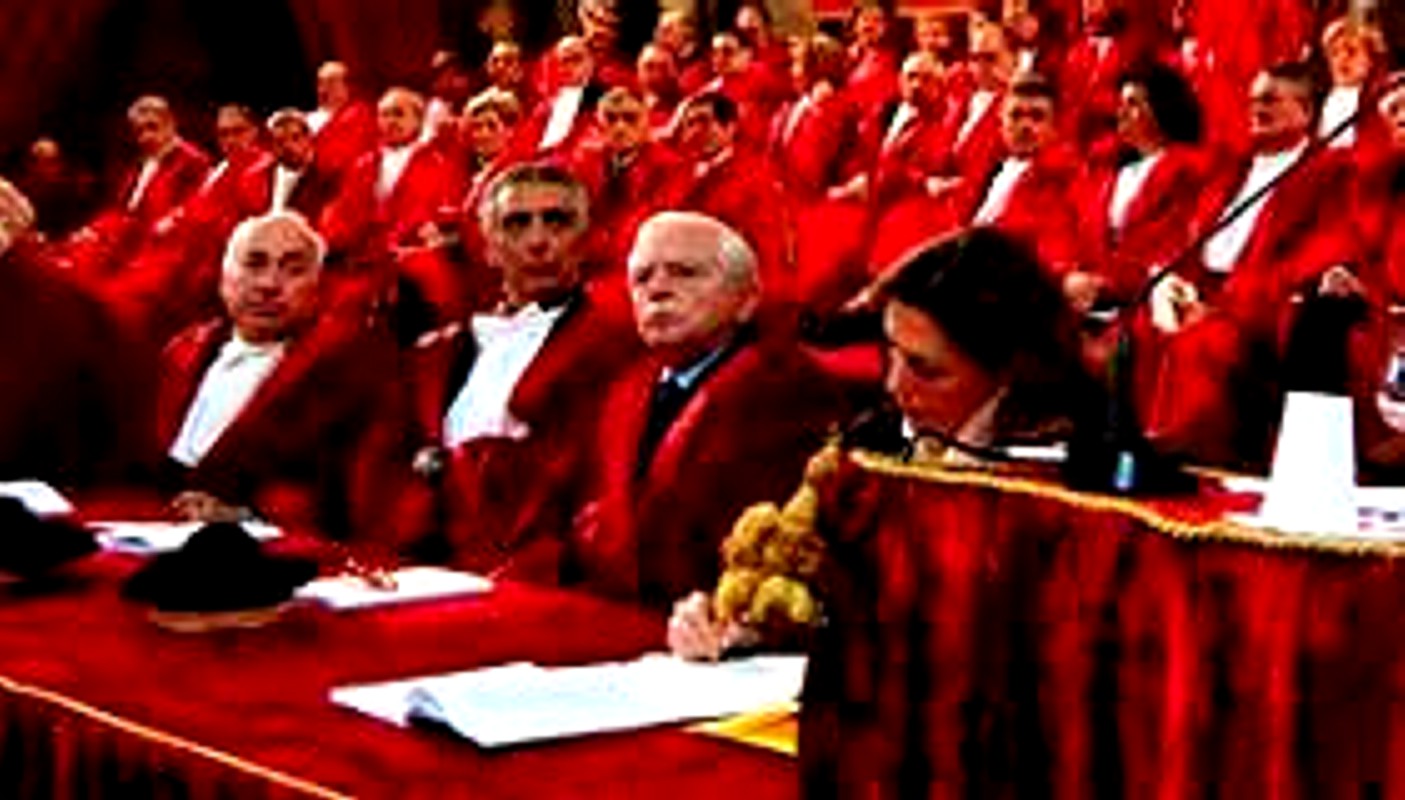
Saturday, August 24, 2013
Desperate Ghirga Urges Amanda Knox To Show At Florence Appeal, But She’s Created More Problems
Posted by Peter Quennell
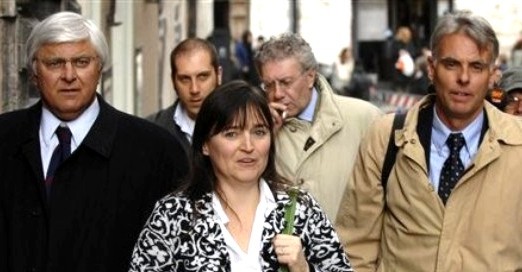
[Above: Knox’s legal team with mom back when; even then it looked like they could use some sleep]
Overview
Meeting in Seattle, Amanda Knox’S lawyer urges her to be at the Florence appeal, but his suggestion falls on deaf ears.
Here is a brief report from Italy. Clearly her lead defense lawyer Ghirga (who normally handles only small-time crime) thinks the presence of Knox and her entourage coould humanize her and allow her to speak out and to guide him.
But Knox has really been burning her bridges to Italy big-time. Let us list some of the ways in which they are now foolishly dug in so deep.
Further Law-Breaking
Since the end of trial in 2009 Amanda Knox’s entourage and she herself appear to have broken law after law after law, issuing new smears, harassing the victim’s family, having her book taken to court in Bergamo.
In Florence, how does she talk about that?
Evidence Could Strengthen
The evidence in the case as presented at trial in 2009 remains rock solid to this day (the Massei outcome is the state of play) and if the large knife is retested, it could actually get way worse. Hundreds of open questions remain which Knox has strenuously avoided answering, either on the stand or in her book or on TV.
In Florence, how does she talk about that?
Calunnias Of Justice Officials
Every instance where Amanda Knox and any of her entourage alleged without hard proof that Italian police and prosecutors have committed crimes (and there have been literally hundreds of such accusations by Preston, Fischer, on and on, now all captured and preserved) could see any or all of them hauled into court with zero heads-up (ask Sforza).
In Florence, how does she talk about that?
Framing Of Dr Mignini
In 2011 Knox was sentenced to three years (served) for the crime of framing Patrick Lumumba. So what does this slow learner do? Turn right around and commit the SAME crime in her nasty book, only this time she makes it worse. This time, she frames the chief prosecutor, in describing in detail a highly illegal interrogation that never took place.
In Florence, how does she talk about that?
Threat Of Conspiracists
There are perhaps 40 felony allegations against police and prosecution in Sollecito’s blood-money book and maybe another 20 in Knox’s own. Each of them will be put on trial separately for those claims and either one of them or both in desperation could take down all the writers, all the agents, all the publishers, all the wild-eyed conspiracists who helped write the books, and all those who made the illegal multi-million dollar deals, including their own two dads.
In Florence, how does she talk about that?
Threat Of Frank Sforza On Trial
The contempt of court trial of Frank Sforza is about to start. He is desperate to stay out of jail, and all of his alleged felonies since 2008 in contempt of the court could put him there for up to ten years. Consider the list of precisely who in Italy and the US Frank Sforza might take down, to try to give himself something of a break. This list is nothing if not long (see next post).
In Florence, how does she talk about that?
Threat Of Hellmann And Aviello
Witness Luciano Aviello is now on trial and as this post explained Aviello could take down all of the defense lawyers (for illegal dealing over the “right” judge), all of the Sollecitos, if they offered bribes, and both of the judges, Hellmann and Zanetti, who presided over the annulled appeal.
In Florence, how does she talk about that?
Conclusion
Nobody with any sense flouts the Supreme Court, or the extremely important, powerful court in Florence, which has sent down some of the toughest perps in the land.
Both courts and both prosecution teams are well-know in Italy for being cold and relentless in their search for the truth. None of the four lead lawyers for Sollecito and Knox has ever won even one case either in Florence or before the Supreme Court.
This might well be a trial balloon, to see how the Florence prosecutors and courts react. An arrest warrant, maybe? As we have seen lately, they act fast, and suddenly at any time.
Monday, August 05, 2013
A New DNA Analysis Strongly Implicating Sollecito Seems to Have The Defense Forces Rattled
Posted by The Machine
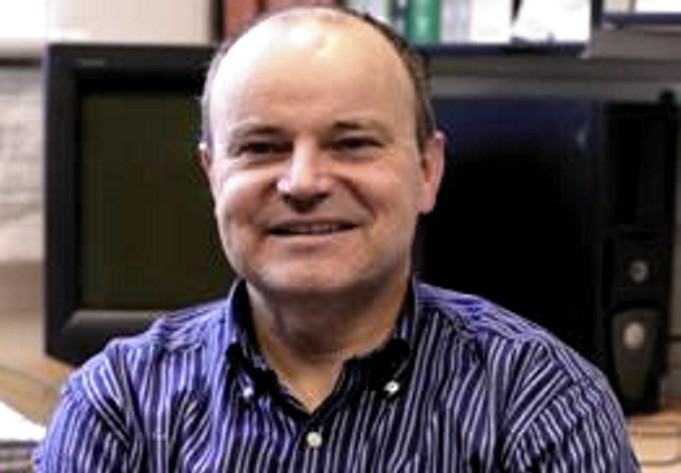 F
F
[Above: DNA professional Professor David Balding; at bottom, DNA amateurs Barras and Halkides]
The Supreme Court has already shown strong disdain for the myriad dirty tricks of the defense forces, and legal action is building against them (see our post next week).
That the defense forces in this context attempt to put out even more misleading information seems a sure sign that their backs are to the wall, and that they will risk anything to again tilt the playing field.
Colin Barras
“Software says Amanda Knox’s DNA wasn’t at crime scene” This highly misleading header appeared above an article by Colin Barras on the New Scientist website last month.
It should be pointed out that Colin Barras isn’t a DNA expert. He has never been involved in a forensic investigation. He has never provided expert testimony in a court case. He is simply a freelance British science writer with degrees in geology, palaeobiology and palaentology - the palaentology of Jurassic sea urchins.
Barras explains in his article that Professor David Balding, a Professor of Statistical Genetics at University College London, has developed new software for interpreting Low Template DNA evidence.
This is true. However, Barras then goes on to make the following claim:
Using the software on data from Knox’s trial suggests that it was very unlikely that her DNA was at the crime scene.
In fact Professor Balding and his software suggested nothing of the sort. Professor Balding was referring specifically to an incomplete DNA profile on Meredith Kercher’s bra clasp which has never been at much issue.
He did not refer to all the other DNA evidence that was collected at the crime scene and presented as evidence in court.
It’s important to clarify what this crime scene actually is, because the defense forces of Amanda Knox and Raffaele Sollecito constantly move the goalposts in relation to this case depending on who they are talking about.
When they talk about the evidence against Knox and Sollecito, their version of the crime scene is strictly limited to Meredith’s room. When they discuss the evidence against Guede, their version of the crime scene includes other rooms in the cottage i.e. the other bathroom and the hallway. And when they discuss the collection of the DNA evidence, their version of the crime scene suddenly includes the flat downstairs, even though no crime was committed there.
According to Wikipedia “A crime scene is a location where a crime took place (or another location where evidence of the crime may be found), and comprises the area from which most of the physical evidence is retrieved by law enforcement personnel, crime scene investigators (CSIs) or in rare circumstances, forensic scientists.”
The Scientific Police from Rome and the Forensic Police from Perugia clearly regarded most of the cottage as a crime scene. The Forensic Police from Perugia catalogued potential evidence by placing letters and numbers in different rooms in the cottage. (The Massei report, p200).
The Scientific Police then collected DNA and forensic evidence from Meredith’s room, Amanda Knox’s room, the hallway, the kitchen, the blood-spattered bathroom, the other bathroom which was used by Filomena and Laura and Filomena’s room where the break-in was allegedly staged. That’s a total of seven rooms.
And the Scientific Police didn’t actually claim at the trial that the incomplete profile on the bra clasp belonged to Amanda Knox. It was Sollecito’s forensic expert Professor Vinci who claimed that Knox’s DNA was on Meredith’s bra. His findings were presented in court at Rudy Guede’s fast-track trial in 2008.
So Colin Barras has used a straw-man argument. He has completely ignored the six pieces of DNA evidence that place Amanda Knox at the crime scene on the night of the murder.
According to the prosecution’s experts, Amanda Knox’s blood was found mingled with Meredith’s blood in three places in the bathroom: on the ledge of the basin, on the bidet, and on a box of Q Tips cotton swabs.
Knox’s DNA and Meredith’s DNA was also found mixed together in a bare bloody footprint which was revealed by Luminol in the hallway and a mixture of Knox’s DNA and Meredith’s blood was also found on the floor in Filomena’s room.
Amanda Knox’s DNA was found on the handle of Sollecito’s kitchen knife and a number of forensic experts - Dr. Patrizia Stefanoni, Dr. Renato Biondo, Professor Giuesppe Novelli, Professor Francesca Torricelli, Luciano Garofano, Greg Hampikian and Elizabeth Johnson - have all confirmed that Meredith’s DNA was on the blade.
Dr Stefanoni analysed the traces on the knife six days after last handling Meredith’s DNA. This means that contamination couldn’t have occurred in the laboratory. Meredith had never been to Sollecito’s apartment, so contamination away from the laboratory was impossible.
The knife is still in evidence and remains compelling evidence against Knox and Sollecito.
Ominously for Knox and Sollecito, the Supreme Court explained how DNA evidence should be assessed in court i.e. contamination must be proven with certainty not supposition.
The burden of proof is on the person who asserts contamination, not the person who denies it.
In other words, if the defence lawyers claim the DNA evidence was contaminated, they must describe the specific place and time where it could have plausibly occurred.
Nobody has ever proved that the bra clasp and knife evidence were contaminated and it’s difficult to see how the defence lawyers’s experts are going to do this at the new appeal.
Chris Halkides
Chris Halkides is one of Amanda Knox’s most effusive supporters. He has pontificated extensively about the case on his blog View from Wilimington and on other Internet websites.
On 30 July, he was finally prompted to post an interview with Professor Balding done some months previously. I suspect Halkides had been very keen to interview Professor Balding after reading Colin Barras’ article on the New Scientist website; but was holding back on posting it because it went against his own claims.
Indeed, his interview has turned out to be quite a slap in the face for the Friends of Amanda and Colin Barras, because Professor Balding categorically described the DNA evidence against Sollecito to Halkidis as “strong”.
It’s worth summarising Professor Balding’s impressive academic record which for this case is topnotch, perhaps the best .
He is currently the Chair of Statistical Genetics at University College in London. He has a first-class honours degree and a PhD in Mathematics. And he has written many journal articles and co-authored a number of books on a range of topics.
This is apparently the whole of Chris Halkides’ interview with Professor Balding:
TUESDAY, JULY 30, 2013
An interview with David Balding
Part 36 in the Knox/Sollecito case
Professor David Balding recently published an analysis of the bra clasp DNA. It may be helpful to explain some terms found in this article. John Butler (Fundamentals of Forensic DNA Typing) defines the likelihood ratio (LR) as “The ratio of the probabilities of the same event under different hypotheses, and he explains that the prosecution’s hypothesis is usually the numerator, and the defense’s hypothesis is usually the denominator. A ban is a unit of expressing the weight of evidence (WoE). This scale is logarithmic; a likelihood ratio of three bans is equal to one thousand. Some months ago Dr. Balding was kind enough to answer some of my questions about this work.
Does Raffaele Sollecito¹s DNA fall into the category of low template DNA, and if so, should two separate amplifications have been run?
There’s no strict definition of “low-template” but broadly yes the peaks associated with Sollecito are low (but not those associated with Kercher, they are high). Conti-Vecchiotti discuss a threshold of 50 rfu below which a peak should not be relied on; in the UK, that threshold was used in the past but nowadays as techniques have improved the threshold is often lower, 25 or 30.
However that doesn’t matter here as all the peaks associated with Sollecito are well above 50: there is a 65, a 70 and a 98, all the 26 other peaks are above 100. So it is not extremely low template - many low-template cases are successfully prosecuted in the UK even when some peaks fall below the threshold and so are discounted. In this case all the peaks associated with Sollecito seem clear and distinct so I think there can be no concern about the quality of the result as far as it concerns him or Kercher.
Replication is generally a good thing and is nowadays done in most cases in my experience, but not all - one problem is that replication splits the sample and so can increase the chance of not getting a usable result. But although replication is desirable it is not essential. (In a sense there already is replication, because each of the 15 loci is an independent test.)
This is all a matter of weight of evidence, which Conti-Vecchiotti paid no attention to: if you measure the weight of evidence properly, that accounts for the extra assurance that comes from replication and gives a stronger result (or conversely gives a weaker result if there is not replication). But because Sollecito is fully represented in the stain at 15 loci (we still only use 10 in the UK, so 15 is a lot), the evidence against him is strong even allowing for the additional uncertainty due to non-replication.
Are there contributors other than Raffaele Sollecito and Meredith Kercher to the autosomal profiles? If so, how does the presence of this additional DNA affect the bra clasp as evidence?
Yes, Conti-Vecchiotti identified a further 12 above-threshold peaks at alleles that could not have come from Sollecito or Kercher. They correctly criticised the scientific police for ignoring these: many do appear to be stutter peaks which are usually ignored, but 4 are not and definitely indicate DNA from another individual. The extra peaks are all low, so the extra individuals contributed very little DNA. That kind of extraneous DNA is routine in low-template work: our environment is covered with DNA from breath and touch, including a lot of fragmentary DNA from degraded cells that can show up in low-template analyses.
There is virtually no crime sample that doesn’t have some environmental DNA on it, from individuals not directly involved in the crime. This does create additional uncertainty in the analysis because of the extra ambiguity about the true profile of the contributor of interest, but as long as it is correctly allowed for in the analysis there is no problem - it is completely routine.
Are there contributors to the Y-STR profile other than Raffaele Sollecito? If so, how does the presence of this DNA affect our interpretation of the bra clasp as evidence?
I haven’t looked closely at the Y evidence - there seems no need for it because the autosomal evidence is overwhelming for the presence of DNA from Sollecito. But from a look at Conti-Vecchiotti, it seems to back up the conclusion from the autosomal profiles: Sollecito’s alleles are all represented and these generate the highest peaks, but there are some low peaks not attributable to him; so at least one of the additional contributors of low-level DNA to the sample was male.
The bra clasp was collected about 47 days after the murder, and it was found in a different location from where it was initially observed. In the interim many people entered the cottage and items from her room were removed. Are these concerns sufficient for the clasp to be excluded as evidence?
The only worry would be if somehow DNA from Sollecito was brought into the room and deposited on item 165B. I don’t know enough about what happened to say if that was likely but I’d guess that people walking in and out of the room etc would be unlikely to do that.
The clasp was collected with gloves that were not clean, not with disposable tweezers (videos here and here). The glove was handled by more than one person. Are these concerns sufficient for the clasp to be excluded as evidence? If not, should the clasp be given less weight as evidence because of them?
Same comment - the only concern is if any of this could have transferred DNA from Sollecito onto item 165B.
Would you care to comment on the storage of the clasp after the forensic police tested it?
I know nothing about it.
Did you analyze the electronic data files? Did you examine the laboratory¹s own protocols and machine logs?
I have only seen the epgs for the autosomal DNA profiles of 165B. There is an unclear version of them in the Conti-Vecchiotti report, but Prof Vecchiotti kindly provided me with a clean set.
Did you examine the negative controls?
No
Fellow main poster Stilicho highlighted the most important conclusions from this interview on the PMF Forum where the quality of the DNA discussion is very informed.
The interview contains a few things that have been vigorously denied by the FOA:
The 50 RFU level is not sacred or inviolable.
It is improbable that Sollecito’s DNA got there by secondary transfer or by contamination.
The likelihood that the DNA on the bra clasp is Sollecito’s DNA is “overwhelming”.
...the interview doesn’t contain anything not already known to both sides but it contains several key elements that are not accepted by both sides.
Chris Halkides asked two-part leading questions and didn’t get the answers that would be needed to continue to falsely assert that Sollecito’s DNA is not abundant on the clasp or that, if it was there, it likely got there by some other route.
All the other inferences about environmental contamination are irrelevant to Balding’s main point: it is Sollecito’s DNA on that clasp and it didn’t get there by accident.
Final Thoughts
Some credit must go to Chris Halkides for finally posting the interview with Professor Balding even though it categorically said the DNA evidence against Sollecito is strong. I’m not sure he’ll be invited to any FOA events in the future.
Shame though on Colin Barras, for writing such a misleading article, and for using a straw man argument to highly misrepresent the DNA evidence against Amanda Knox which was then deliberately fed to the Italian media.
He completely ignored the six pieces of evidence that place her at the crime scene on the night of the murder. He also completely ignored the most important of Professor Balding’s findings. ie that the DNA evidence against Sollecito is strong.
This finding implicates Knox and places her at the crime scene when Meredith was killed, and makes a mockery of Barras’s headline that suggested otherwise.
[Below: the wannabe crime-scene DNA experts Colin Barras, left, and Chris Halkides, right]
